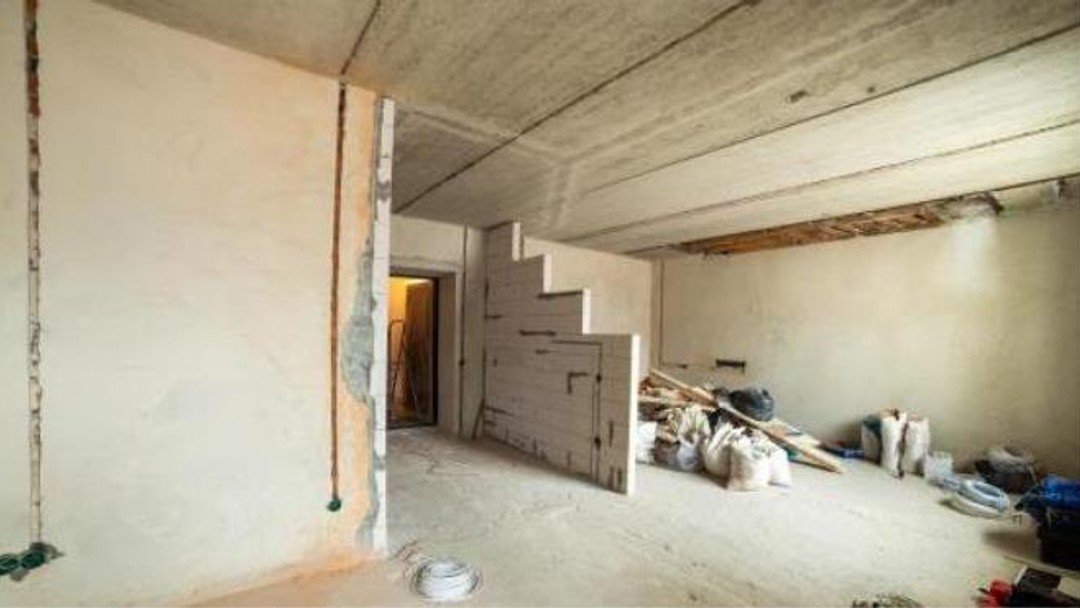Permanent Trespass: injunction or damages?

Mark Pawlowski examines the court's approach to permanent encroachment of land
In most trespass cases, the defendant’s conduct involves a mere temporary occupation or user of the claimant’s land without permanently depriving them of their possession.
In these cases, the court will invariably grant the claimant an injunction requiring the trespasser to desist from any continuance of the trespass and award damages representing the market rental value of the property occupied or used for the period of the wrongful occupation or user.
But what are the claimant’s legal remedies if the trespass takes the form of a permanent encroachment onto their land, for example, by the erection of a building?
Discretionary approach
The courts have traditionally retained a discretion whether to grant the equitable remedy of a mandatory injunction in cases involving permanent trespass. The principles to be applied in deciding whether an injunction should be granted or damages awarded in substitution (under what is now section 50 of the Senior Courts Act 1981) were laid down by AL Smith LJ in Shelfer v City of London Electric Lighting Co [1895] 1 Ch 287:
“In my opinion, it may be stated as a good working rule that (1) if the injury to the plaintiff’s legal rights is small, (2) and is one which is capable of being estimated in money, (3) and is one which can be adequately compensated by a small payment of money, (4) and the case is one which it would be oppressive to the defendant to grant an injunction, then damages in substitution for an injunction may be given”.
More recently, in Site Developments (Ferndown) Ltd v Barratt Homes Ltd [2007] EWHC 415, the high court stressed that an injunction was an equitable remedy, so that even if a claimant established that his legal rights had been infringed, the court had a discretion as to whether or not to grant an injunction.
The key question was whether the grant of injunctive relief would be oppressive to the defendant, which would depend on all the relevant circumstances existing at the time, including the conduct of the parties.
Damages
A mandatory injunction was refused in Griffiths v Kingsley-Stubbs [1986] 6 WLUK 5. The defendant had built a bathroom extension, the footings of which extended a maximum of 1.5 inches into the claimant’s next door land, which had outline planning permission for the erection of a single house.
The encroachment, however, did not affect the development potential of the claimant’s land. The Court of Appeal, agreeing with the trial judge that this was not an appropriate case for granting an injunction, awarded damages in lieu in the sum of £400.
Similarly, in Apexmaster Ltd v URC Thames North Trust [2018] 2 WLUK 584, an application for an interim injunction to restrain trespass by scaffolding, which over-sailed the roof of the claimant's property, was refused.
The trespass was minor, could be easily reflected in damages and an injunction would be oppressive in the circumstances. (See also Young & Co’s Brewery Plc v Gordon [2001] 5 WLUK 154 which concerned the building of fire escape; and Seeff v Ho [2011] EWCA Civ 186, the conversion of a garage roof.)
In the leading case of Jaggard v Sawyer [1995] 1 WLR 269, the claimant was the owner of one of 10 houses which had been built in a private cul-de-sac. Each owner had a right of way along the private roadway and was subject to restrictive covenants preventing any further building.
The defendant purchased a house at the opposite end of the cul-de-sac from the claimant’s property and began to build another house on land behind his property. The claimant threatened to bring proceedings to prevent the new house from obtaining access along the private roadway, but did not actually seek an injunction until the building work was at an advanced stage.
The Court of Appeal, agreeing with the trial judge, concluded that it would be unduly oppressive to the defendant – bearing in mind the claimant could at an early stage have sought an injunction – to award an injunction, especially since this would have meant rendering the new house totally landlocked.
Moreover, the injury to the claimant’s legal rights was small and could be adequately compensated by a small money payment. Therefore, the correct approach applying the test in Shelfer was to award damages (in lieu of an injunction) which fell to be assessed by the amount which the defendant might reasonably have paid for a right of way over the driveway and release of the restrictive covenants. (See also Amec Developments Ltd v Jury’s Hotel Management (UK) Ltd [2001] 82 P & CR 22 which concerned an hotel encroaching a boundary by 3.9 metres; and Jones v Ruth [2011] EWCA Civ 804, concerning the addition of a third storey on adjoining property.)
Mandatory injunction
A mandatory injunction was granted in Cudmore-Ray v Pajouheshnia [1992] 11 WLUK 392. Here, the defendant built at the rear of his property a granny flat which encroached into the airspace of the claimant’s land by between 7/8ths of an inch at one end and a maximum of 4 inches along the midline of a party wall separating the parties’ gardens.
The court granted a mandatory injunction for the removal of the trespass and £100 damages on the basis that the encroachment was a permanent “festering sore” which would rankle more as each day went by.
Moreover, by hurrying up with the building work so as to avoid an injunction, the defendant had acted with a reckless disregard for the claimant’s rights and had thereby disentitled himself from asking that damages be assessed in substitution.
An award of damages in lieu of an injunction was also refused in Daniells v Mendonca (1999) 78 P & CR 401, where the parties lived in adjoining terraced properties. While the claimant was away on holiday, the defendants had a bathroom extension added to their house. A wall belonging to the claimant (and built entirely upon her land) was used to support the extension.
The area of land annexed comprised about 1.5 inches along the length of the extension (about 12 feet.). However, applying the Shelfer test the injury to the claimant’s legal right could not be characterised as small in view of the continuing nature of the trespass and the fact that the claimant would be permanently deprived of her land. It was also apparent that the injury could not be adequately compensated by a small money payment.
A figure of £5,000 was the estimate accepted by the trial judge as the diminution in value to the property. In addition, there was some risk of structural damage to the claimant’s property since it was admitted by the defendants that the claimant’s wall was of insufficient structural strength to support the extension and that there was an inadequate fire break between the properties.
Accordingly, the Court of Appeal, distinguishing the Jaggard case, held that a mandatory injunction was appropriate (requiring the removal of so much of the extension as encroached on the claimant’s land) especially since such an order would not be oppressive to the defendants, who had gone ahead with the building work without complying with the London Building (Amendment) Act 1939.
Non-discretionary approach
There is also some authority for a more radical, non-discretionary approach to the granting of mandatory injunctions in cases involving permanent building encroachment. In Harrow London Borough Council v Donohue [1995] 1 EGLR 257 a garage, erected by the defendant with building regulation consent and planning permission, encroached onto the claimant’s land covering about 268 square feet.
In the County Court the trial judge, applying the principles set out in the Shelfer case, awarded damages to the claimant in lieu of a mandatory injunction. The Court of Appeal, however, rejected this conventional discretionary approach and held that in a situation where the landowner has been totally dispossessed by the defendant’s encroaching building, the claimant has an option of either accepting the encroachment as an accretion to his land, or taking his remedy to court.
If the latter course is taken, the claimant is entitled as of right either to an order for possession of his improved land or, alternatively, to a mandatory injunction for the taking down of the offending building. Waite LJ stated: “Was there really any discretion at all? If a defendant acts in total breach of the plaintiff’s proprietary rights, by dispossessing him altogether through the erection of building works which have the effect of excluding him totally from the land to which he has title, does the court have any real choice in the matter?”
In the instant case, where only half of the offending garage was built on the claimant’s land, a possession order was considered inappropriate. Instead, a mandatory order was granted for the demolition and removal of so much of the garage as encroached on the claimant’s land.
The rationale of the decision is that a landowner is entitled not to be deprived of his land without his consent; and a mandatory order for demolition should, therefore, be almost an automatic remedy where there is a permanent encroachment by building.
Conclusion
In reaching its decision, the Court of Appeal in Harrow was mindful to point out that there was no authority which provided a precedent for a court sanctioning the total dispossession of land by a trespasser by means of an award of damages in lieu of a mandatory injunction.
An obvious attraction of the Court of Appeal’s approach is that it dispels the notion that a dispossessing defendant has the right, in effect, to buy adverse title through an award of damages. Instead, the rights of the landowner are fully preserved by means of an outright order for possession or demolition.
That said, the decision is not easy to reconcile with the main stream of cases in this area and it does not appear to have been applied in any subsequent case.
Points for practitioners
The courts have traditionally retained a discretion whether to grant the equitable remedy of a mandatory injunction in cases involving permanent trespass. A mandatory injunction is likely to be granted in cases where the encroachment involves a serious infringement of the claimant's rights such that damages would not be an adequate remedy.
The grant of an injunction must not operate oppressively against the defendant. Factors which should be considered include the parties' conduct, such as the claimant's delay in seeking a remedy or the defendant hurrying up with the works without building approval with a reckless disregard for the claimant’s rights.
Where the claimant has been totally dispossessed by the encroachment, they have the option of either accepting the encroachment as an accretion to their land, or taking their remedy to court.
If the latter course is taken, the claimant is entitled as of right either to an order for possession of their improved land or, alternatively, to a mandatory injunction for the taking down of the offending building.
The decision in London Borough Council v Donohue is not, however, easy to reconcile with the traditional discretionary approach to the grant of mandatory injunctions and should, therefore, be viewed with some caution.
Mark Pawlowski is a barrister and professor of property law at the School of Law, University of Greenwich gre.ac.uk/law
